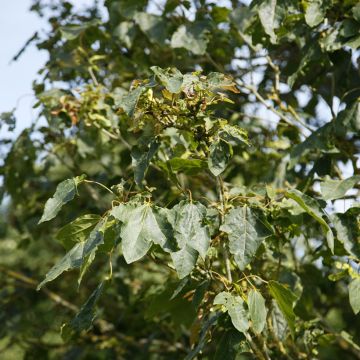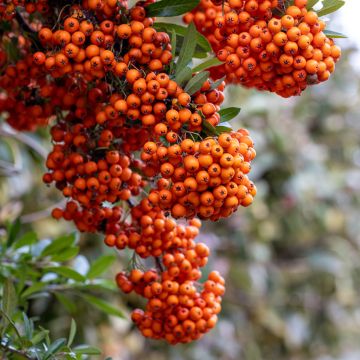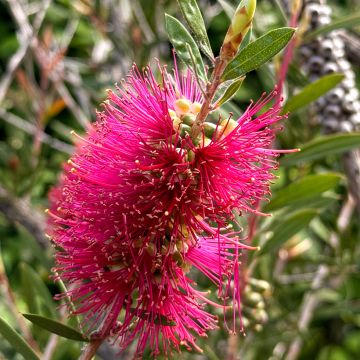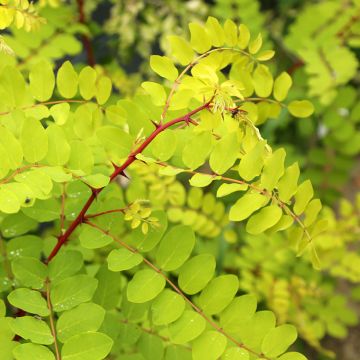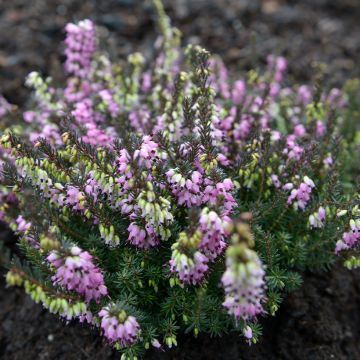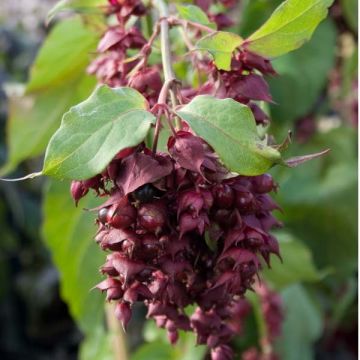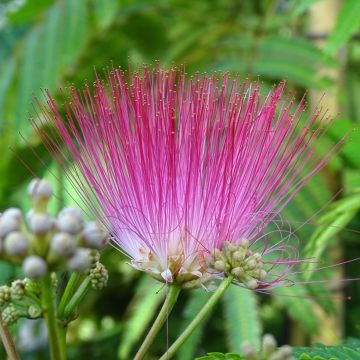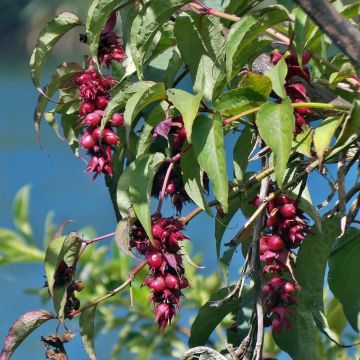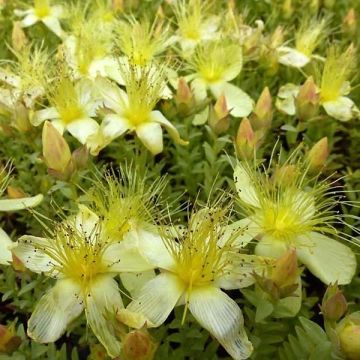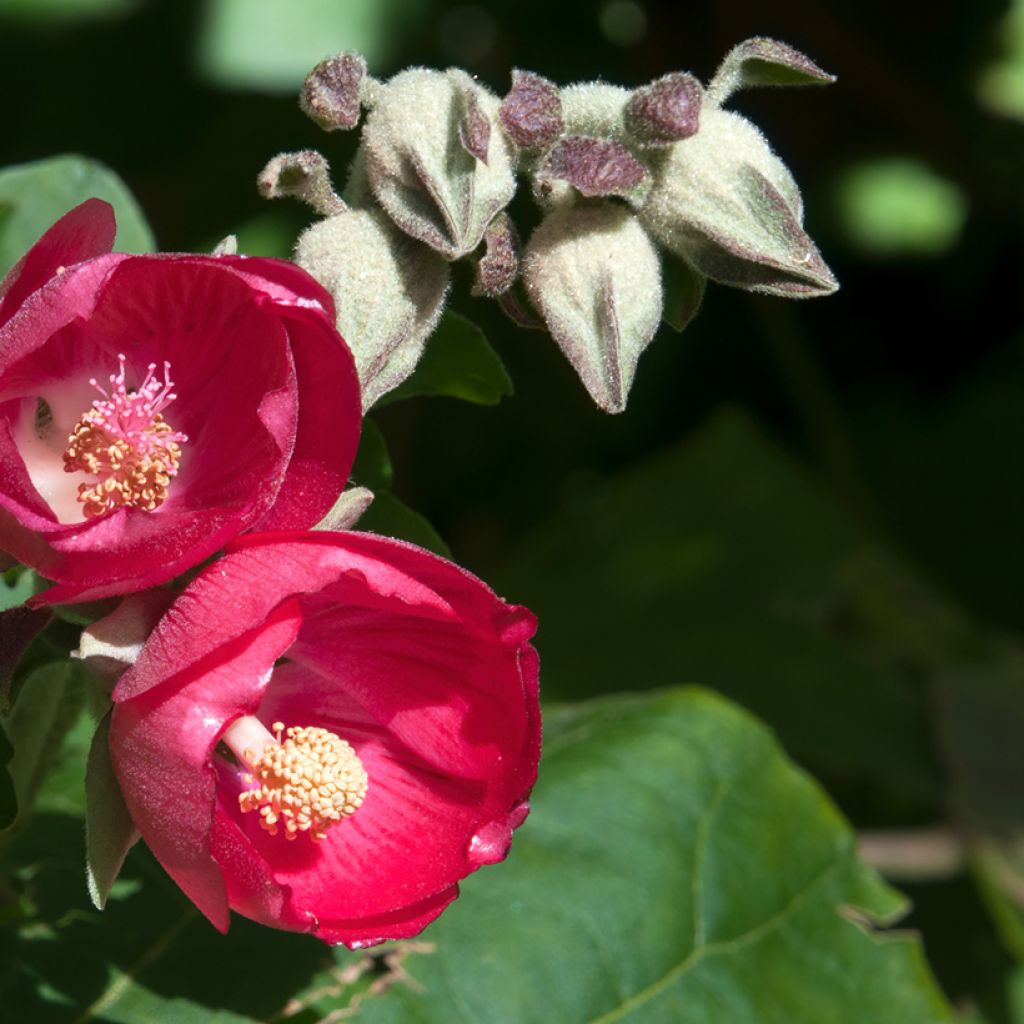

Phymosia umbellata
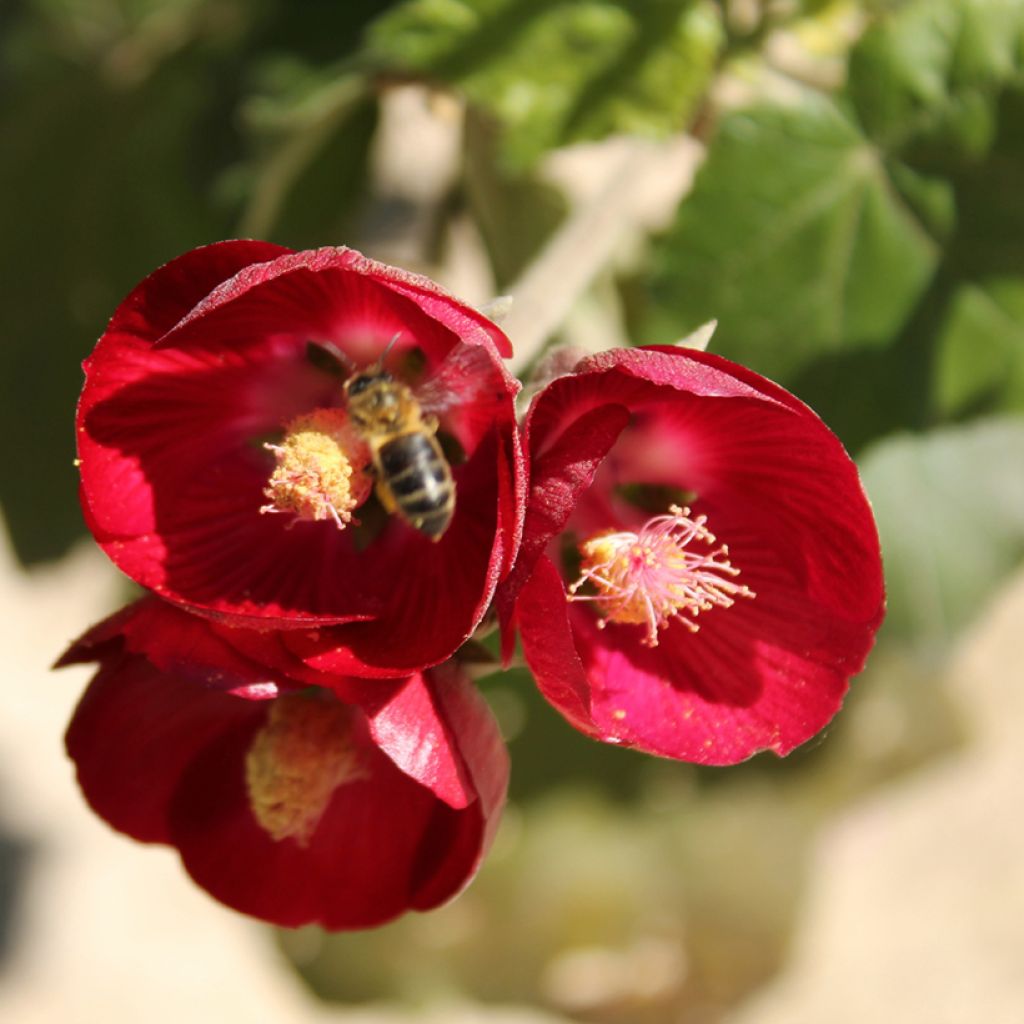

Phymosia umbellata
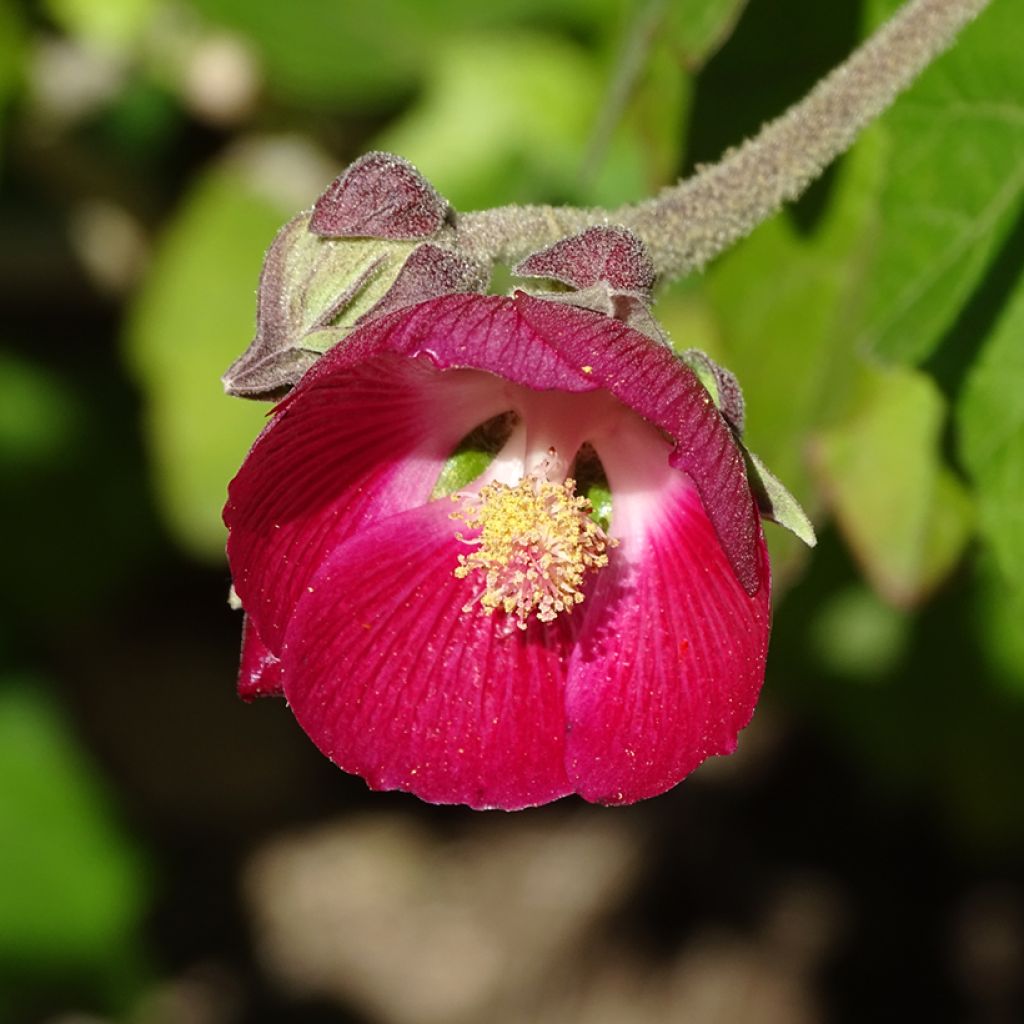

Phymosia umbellata
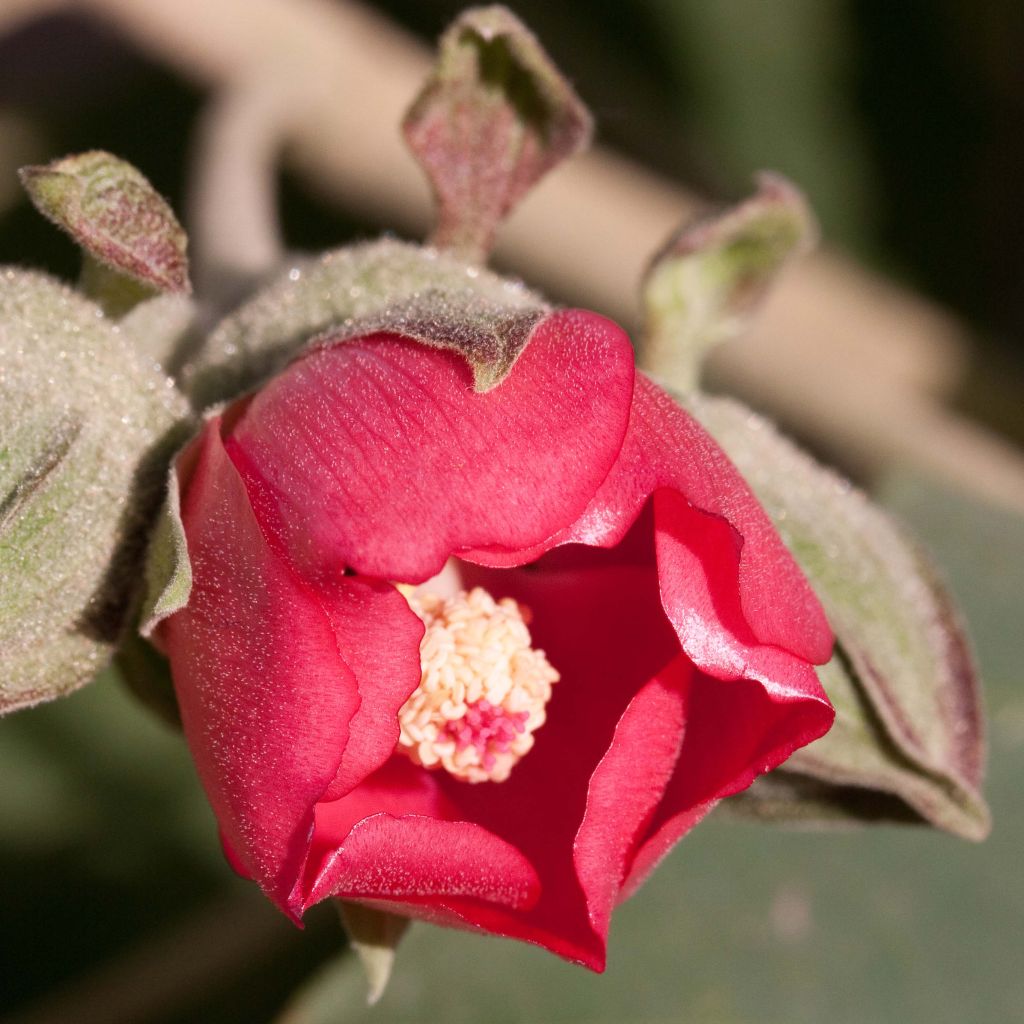

Phymosia umbellata
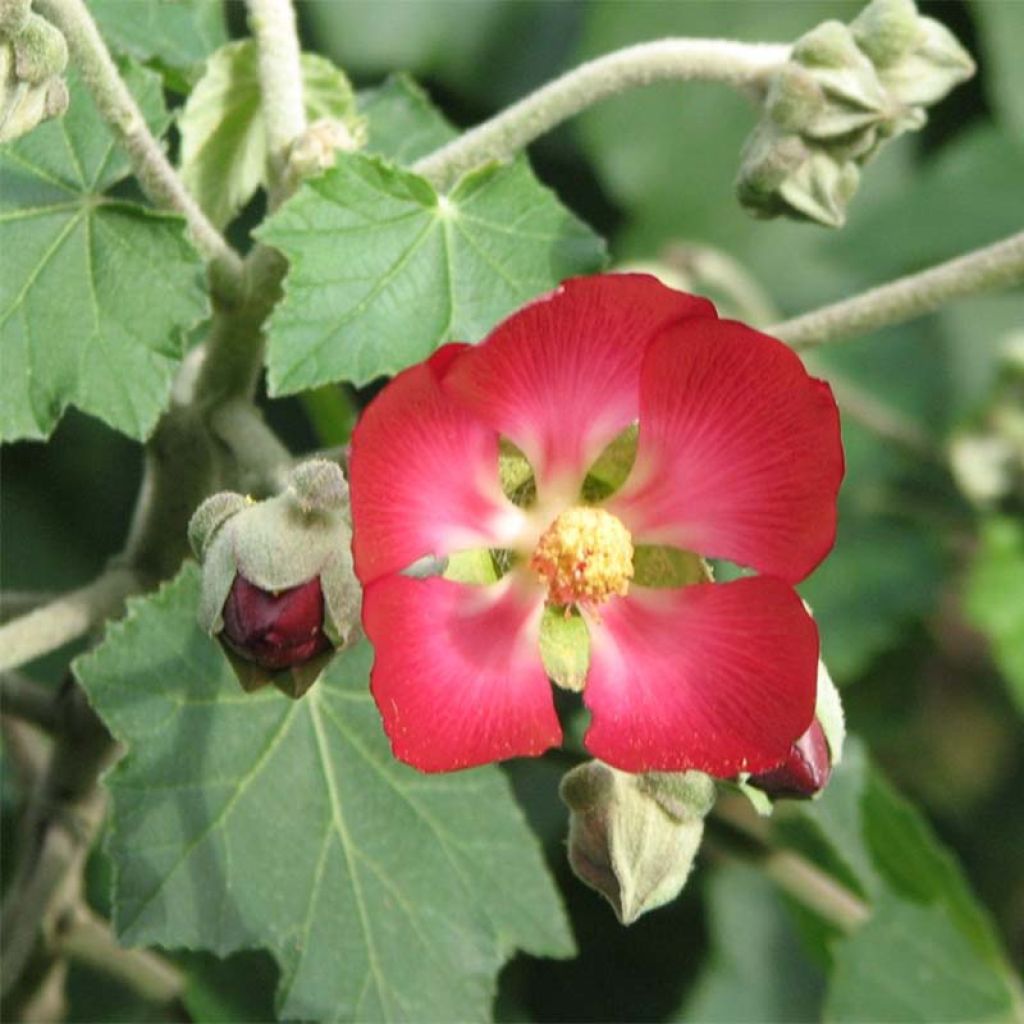

Phymosia umbellata
Phymosia umbellata
Phymosia umbellata
Mexican Bush Mallow
Size as ordered, looks healthy, planted immediately, hoping it will thrive!
AnnaEli, 18/03/2024
This item cannot be shipped to the selected country
Delivery charge from €5.90
More information
Schedule delivery date,
and select date in basket
This plant carries a 24 months recovery warranty
More information
We guarantee the quality of our plants for a full growing cycle, and will replace at our expense any plant that fails to recover under normal climatic and planting conditions.
From €5.90 for pickup delivery and €6.90 for home delivery
Express home delivery from €8.90.

Does this plant fit my garden?
Set up your Plantfit profile →
Description
Phymosia umbellata is a Mexican bush of rare elegance, related to Abutilons, Hibiscus, and mallow, which should be seen more often in our coastal gardens or mild climates. Its Abutilon-like flowers, deep carmine red with a pure white throat, create a magnificent display with its grey-green and velvety vine leaves, from summer to the first cold weather, on a plant that can reach over 3m (10ft) in height in the ground. Apart from its low frost resistance (up to -8°C (17.6°F)), Phymosia umbellata is not difficult to grow in full sun or partial shade, in any good well-drained garden soil. It easily integrates into a flowering hedge, can be displayed near a path, or nestled against a wall for protection, or even in a large pot on the terrace, to be stored indoors in colder regions during winter.
Phymosia umbellata, formerly known as Sphaeralcea umbellata, is a bush belonging to the large mallow family. It is endemic to the forests of the Mexico region, governed by a tropical climate tempered by altitude, dry in winter, hot in spring, and rainy in summer. In its natural habitat, it can reach a height of 5 to 6m (16 to 20ft), but typically reaches 3m (10ft) in height and 1.50m (5ft) in width in our mild climate gardens. Its habit is bushy, rounded, supported by branches covered in a whitish fuzz. Its growth is rapid. It flowers for a long time if the weather remains mild, and its ephemeral flowers, which fade within 24 hours, continuously renew from July until December. The large buds covered in light grey fuzz are grouped in small clusters of 3 to 4 units in the axils of the leaves, and they open one after the other. Each flower, measuring up to 7cm (3in) in diameter, consists of 5 petals arranged in a cup, with a satin texture, intense carmine red in colour with a white base. The centre of the corolla is occupied by a white column. The flowers, pollinated by insect pollinators, transform into fruits composed of numerous tightly packed seeds that resemble those of roses and are easily self-sown. The foliage of Phymosia umbellata persists in mild climates until -5°C/-6°C (21.2°F). It consists of large palmate leaves measuring up to 20cm (8in) in diameter, with irregular lobes. They are covered in fuzz on their upper surface, giving them a soft grey sheen. This bush is capable of regenerating from the stump after short freezes around -8°C (17.6°F) if the stump is protected (especially in the first two years) and the soil remains relatively dry.
Phymosia umbellata will thrive in many areas spared from severe frosts, Atlantic or Mediterranean. It appreciates bright, warm exposures and can tolerate light shade in southern regions. Plant it in a sheltered spot away from strong winds, in soil that remains slightly moist until late summer. It can be used as a medium-sized hedge, in combination with bush mallows, Berberis 'Atropurpurea' for foliage contrast, a Polygala, or even with a tree clover (Lespedeza thunbergii) that will accompany its late summer flowering. It will also be stunning as a standalone plant or at the back of a perennial bed composed of autumn asters or shrubby salvias with blue flowers, for example.
Report an error about the product description
Phymosia umbellata in pictures


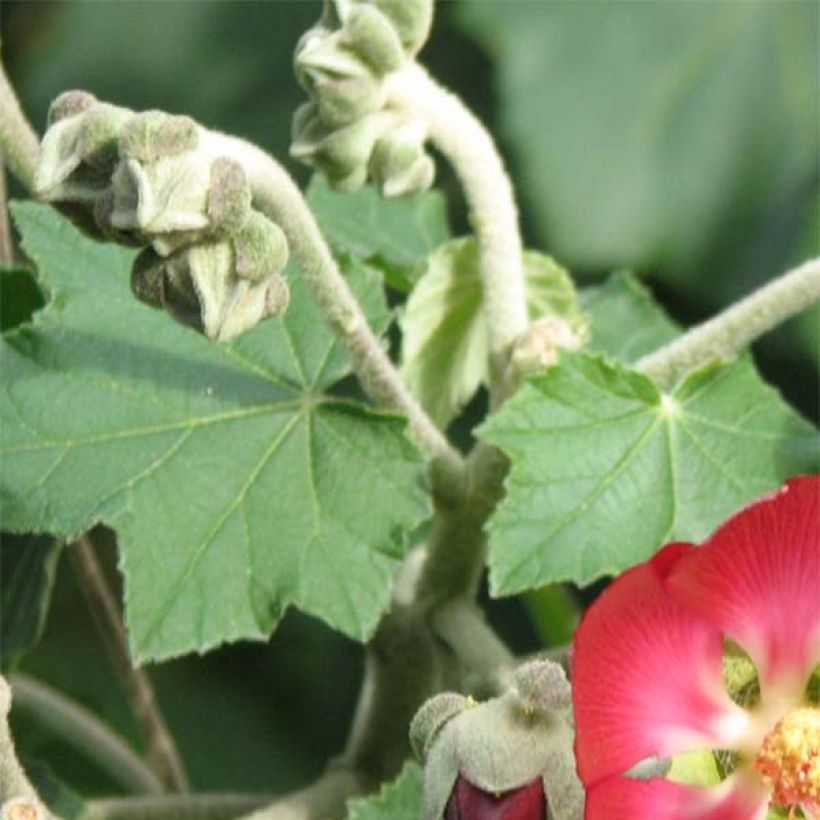

Plant habit
Flowering
Foliage
Botanical data
Phymosia
umbellata
Malvaceae
Mexican Bush Mallow
North America
Other Shrubs A to Z
Planting and care
Plant Phymosia umbellata preferably in spring or early autumn in a very mild climate. Choose a sunny location, or partial shade in southern regions. Install it in a regular but well-drained, deep, loose, rather fertile soil, not too dry in summer. The cold resistance of this bush will be greater if the soil remains dry in winter: the first two years, make sure to protect the stump in winter with a thick mulch. It thrives in slightly acidic, neutral, or slightly calcareous soil. Dig a deep planting hole and add some compost and coarse sand or gravel to improve soil quality if necessary. Water abundantly after planting and during the first two summers in case of prolonged drought. This bush is quite water-efficient once established, but a good watering every 15 days will be appreciated in the Mediterranean region. It seems to be disregarded by slugs and snails and does not have any specific enemies or diseases in our latitudes.
Planting period
Intended location
Care
-
, onOrder confirmed
Reply from on Promesse de fleurs
Summer-flowering shrubs
Haven't found what you were looking for?
Hardiness is the lowest winter temperature a plant can endure without suffering serious damage or even dying. However, hardiness is affected by location (a sheltered area, such as a patio), protection (winter cover) and soil type (hardiness is improved by well-drained soil).

Photo Sharing Terms & Conditions
In order to encourage gardeners to interact and share their experiences, Promesse de fleurs offers various media enabling content to be uploaded onto its Site - in particular via the ‘Photo sharing’ module.
The User agrees to refrain from:
- Posting any content that is illegal, prejudicial, insulting, racist, inciteful to hatred, revisionist, contrary to public decency, that infringes on privacy or on the privacy rights of third parties, in particular the publicity rights of persons and goods, intellectual property rights, or the right to privacy.
- Submitting content on behalf of a third party;
- Impersonate the identity of a third party and/or publish any personal information about a third party;
In general, the User undertakes to refrain from any unethical behaviour.
All Content (in particular text, comments, files, images, photos, videos, creative works, etc.), which may be subject to property or intellectual property rights, image or other private rights, shall remain the property of the User, subject to the limited rights granted by the terms of the licence granted by Promesse de fleurs as stated below. Users are at liberty to publish or not to publish such Content on the Site, notably via the ‘Photo Sharing’ facility, and accept that this Content shall be made public and freely accessible, notably on the Internet.
Users further acknowledge, undertake to have ,and guarantee that they hold all necessary rights and permissions to publish such material on the Site, in particular with regard to the legislation in force pertaining to any privacy, property, intellectual property, image, or contractual rights, or rights of any other nature. By publishing such Content on the Site, Users acknowledge accepting full liability as publishers of the Content within the meaning of the law, and grant Promesse de fleurs, free of charge, an inclusive, worldwide licence for the said Content for the entire duration of its publication, including all reproduction, representation, up/downloading, displaying, performing, transmission, and storage rights.
Users also grant permission for their name to be linked to the Content and accept that this link may not always be made available.
By engaging in posting material, Users consent to their Content becoming automatically accessible on the Internet, in particular on other sites and/or blogs and/or web pages of the Promesse de fleurs site, including in particular social pages and the Promesse de fleurs catalogue.
Users may secure the removal of entrusted content free of charge by issuing a simple request via our contact form.
The flowering period indicated on our website applies to countries and regions located in USDA zone 8 (France, the United Kingdom, Ireland, the Netherlands, etc.)
It will vary according to where you live:
- In zones 9 to 10 (Italy, Spain, Greece, etc.), flowering will occur about 2 to 4 weeks earlier.
- In zones 6 to 7 (Germany, Poland, Slovenia, and lower mountainous regions), flowering will be delayed by 2 to 3 weeks.
- In zone 5 (Central Europe, Scandinavia), blooming will be delayed by 3 to 5 weeks.
In temperate climates, pruning of spring-flowering shrubs (forsythia, spireas, etc.) should be done just after flowering.
Pruning of summer-flowering shrubs (Indian Lilac, Perovskia, etc.) can be done in winter or spring.
In cold regions as well as with frost-sensitive plants, avoid pruning too early when severe frosts may still occur.
The planting period indicated on our website applies to countries and regions located in USDA zone 8 (France, United Kingdom, Ireland, Netherlands).
It will vary according to where you live:
- In Mediterranean zones (Marseille, Madrid, Milan, etc.), autumn and winter are the best planting periods.
- In continental zones (Strasbourg, Munich, Vienna, etc.), delay planting by 2 to 3 weeks in spring and bring it forward by 2 to 4 weeks in autumn.
- In mountainous regions (the Alps, Pyrenees, Carpathians, etc.), it is best to plant in late spring (May-June) or late summer (August-September).
The harvesting period indicated on our website applies to countries and regions in USDA zone 8 (France, England, Ireland, the Netherlands).
In colder areas (Scandinavia, Poland, Austria...) fruit and vegetable harvests are likely to be delayed by 3-4 weeks.
In warmer areas (Italy, Spain, Greece, etc.), harvesting will probably take place earlier, depending on weather conditions.
The sowing periods indicated on our website apply to countries and regions within USDA Zone 8 (France, UK, Ireland, Netherlands).
In colder areas (Scandinavia, Poland, Austria...), delay any outdoor sowing by 3-4 weeks, or sow under glass.
In warmer climes (Italy, Spain, Greece, etc.), bring outdoor sowing forward by a few weeks.



































